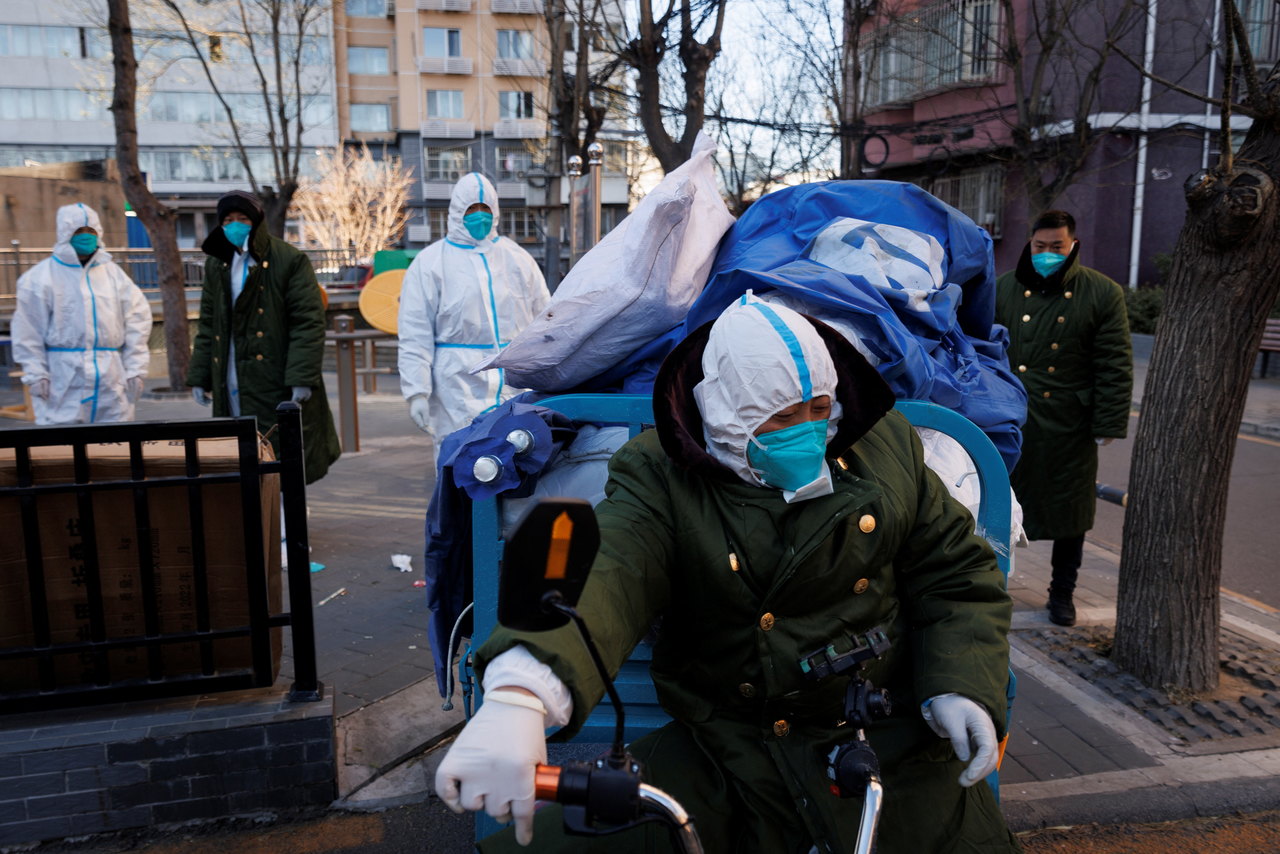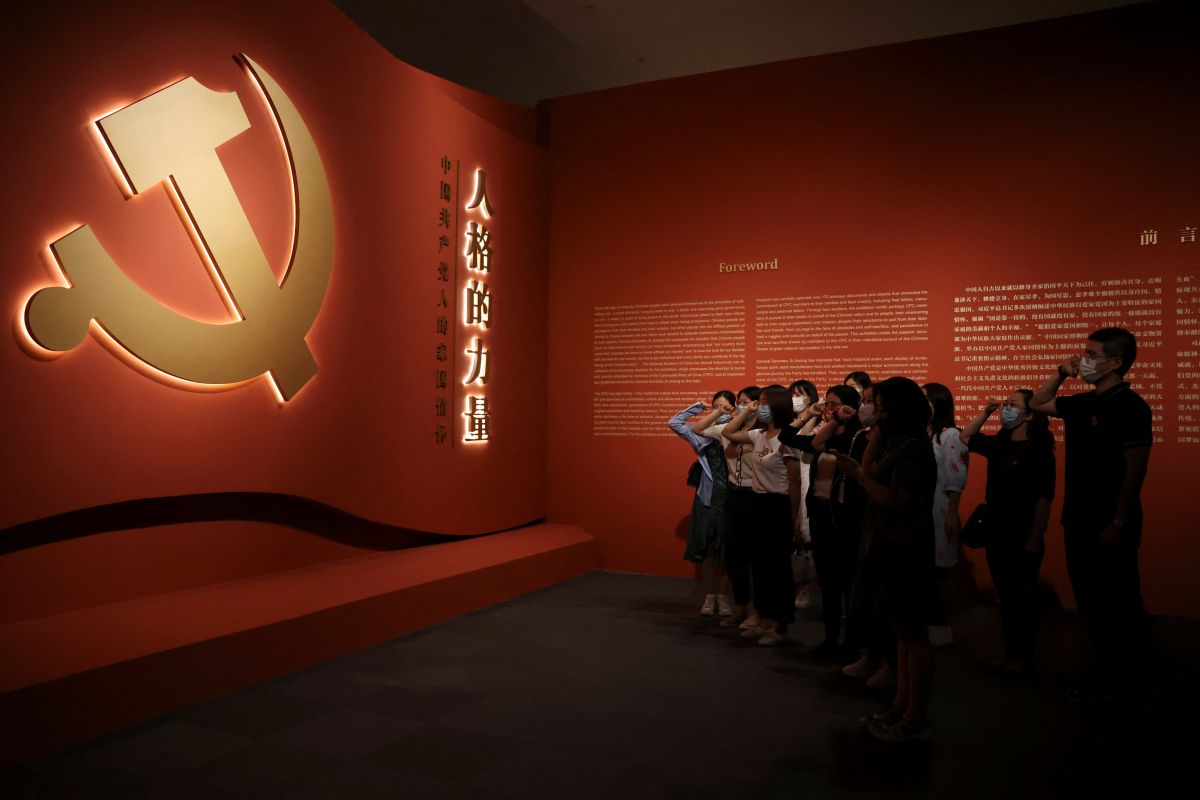China's "Zero COVID" Policy Fails
In the face of the deteriorating economic situation and protests, the Chinese authorities modified the rules of fighting the pandemic. In December, they lifted most of the restrictions, which resulted in a rapid increase in infections and other effects. While maintaining the rhetoric about the positive effects of the “zero COVID” policy, they present the changes as the next stage in the fight against the coronavirus. In the next few months, the authorities’ decisions may bring about an improvement in the economic situation at the expense of, among others, the deaths of millions of Chinese.
 THOMAS PETER / Reuters / Forum
THOMAS PETER / Reuters / Forum
The “zero COVID” policy introduced in March 2020 had been the main tool of the Chinese authorities in the fight against the pandemic. It was based on mass testing and isolation of infected people in special centres, as well as quarantining in the event of contact with a carrier. Entry to China for foreigners and departure from the country for Chinese was practically impossible, as visitors were required to have a negative test result and spend several days in quarantine. Movement in China was controlled using tracking applications—apart from the nationwide one, there were separate ones for each major city and province (several hundred in total on a national scale).
Effects of the “Zero COVID" Policy
In the first stage, the policy allowed for a significant reduction in the number of cases, and thus deaths, which, according to the WHO (based on Chinese data) until March 2022 did not exceed, on average, several dozen a day. From mid-2022, with the emergence of new variants of the virus and the likely low effectiveness of Chinese vaccines (with no legal authorisation for vaccination with Western drugs), the “zero COVID” policy has become ineffective. According to WHO data, from February, the number of patients (up to over 90,000 per day) and deaths (up to almost 300 per day) began to grow rapidly. At the same time, from March to November this year more than a billion Chinese were affected by the lockdown, which lasted an average of less than 30 days.
Thus, the negative social and economic effects of the “zero COVID” policy were growing. Combined with the global downturn or the structural problems of the Chinese economy, it has weakened the economic development prospects of China. It has reinforced the decline in consumption and the disruption of supply chains. In 2021, China’s GDP growth was as much as 8%, but the estimates of the World Bank and OECD for 2022 are much lower, at 2.7% and 3.3%, respectively. In November this year, retail sales fell by 5.9% year after year after falling 0.5% in October year after year. The unemployment rate among Chinese aged 16-24 remained at 17% (as in August 2020). The social effect of the “zero COVID” policy was also the feeling of dependence of the Chinese on the decisions of local party committees, which unreflectively (for fear of the reaction of higher-level authorities) or selectively (presumably due to corruption) enforced the pandemic regulations. The requirement for frequent and government-sponsored testing has also created opportunities for corruption, resulting in the purchase of unreliable tests.
Dissatisfaction of the Chinese
At the end of November, the difficulties caused by the “zero COVID” policy sparked an outbreak of public discontent. The direct cause of the protests was the incident of 25 November when a fire at an apartment in Urumqi, locked from the outside due to quarantine, killed a Uyghur family. The demonstrations caused by this incident lasted less than a week and according to unofficial information, covered 24 Chinese cities, including Beijing, Guangzhou, and Shanghai. The protesters were mainly students, who had been hard hit by difficult living conditions over the last two years, including in dormitories under quarantine. The extraordinary character of these protests resulted not so much from their numbers (tens of thousands of people took part in them), but from their wide geographical scope. Although some of the protesters were detained, the fact that the authorities did not decide to pacify the protests indicates that they were an important element in the internal party debate on the future of the “zero COVID” policy.
The Reaction of the Authorities
Until the 20th CPC congress scheduled for October and confirmation of Xi Jinping’s continued rule, the authorities did not want to change the “zero COVID” policy. Therefore, in the report presented during the congress, there were statements about continuing it. However, in mid-November, before the social protests, a meeting of the CPC Standing Committee, headed by Xi, was held, after which the authorities confirmed the continuation of the current policy, but with different means. They concerned, e.g., testing limits or quarantine lengths. Following these decisions, local authorities, including in Beijing and Shanghai began to loosen restrictions, including prohibiting blocking exits from apartments or gates of housing estates, which was a response to the demands of the protesters. On 6 December, the government’s Xinhua news agency published the authorities’ position that “the most difficult time is now over”, and the rulers announced the next “10 steps”, including lifting the testing requirement and giving sick Chinese people the opportunity to self-isolate at home. On 12 December, the authorities also halted the central tracking application, and on 26 December, they announced the lifting of most restrictions on people coming to China starting from January 2023. Another vaccination campaign is also being conducted, focused on seniors and using Chinese vaccines (according to the Chinese authorities, only 30% of Chinese would accept a Western vaccine). By the end of January 2023, 90% of people over 80 (currently 77%) will have been vaccinated with one dose.
These changes, introduced quickly and without preparation, however, resulted in a rapid increase in the number of patients. The lack of mass testing does not allow reliable assessments of the scale of the disease. According to unofficial information from the Chinese authorities, almost 250 million people may have been infected in the first three weeks of December. Problems with the availability of workers have already appeared in large cities. In Beijing, the number of emergency calls increased from 5,000 to 30,000 daily. With hospitals overcrowded and medical staff shortages, there are reports that some health centres are even staffed by infected doctors. Most of the available antiviral drugs were also purchased from pharmacies.
Conclusions and Perspectives
The CPC’s decision to lift most of the restrictions (apart from, for example, testing people coming from abroad) resulted from the belief that the party was unable to prevent the disease from getting out of control, even with radical measures, and not because of fears of social unrest. The WHO confirmed that the virus was spreading rapidly in China even before restrictions were lifted. Hence, moving away from “zero-COVID” can be considered an attempt to “escape forward”, also in order to improve the economic situation. The changes are intended to make Chinese society achieve herd immunity, which in 2023 should translate into positive economic results. This will also allow the CPC leadership to mobilise the party apparatus around the new pandemic policy. In the official narrative, the party downplays the scale of the disease, talking about unconfirmed effects of “prolonged” COVID-19, or lower mortality of the Omicron variant. Combined with information on abuses by officials and testing companies, this will help the CPC more effectively control the attitudes of the Chinese people, but above all, the loyalty of the apparatus.
However, the decisions taken mean an increase in deaths caused by COVID-19. The apogee should be expected a month after the Chinese New Year celebrations, so at the end of February 2023, especially since airline bookings for the holiday season (7-23 January) reached pre-pandemic levels. The available statistical models (including those of the American IHME or the Shanghai Fudan University) indicate that the number of victims by April 2023 may reach 1-1.5 million. The CPC hopes that by underestimating the number of deaths from COVID-19 and the lack of data transparency, it will avoid destabilisation in the country. The resignations of local politicians deemed ineffective in the fight against the pandemic are possible, which will allow Xi to further strengthen his position. In his speech of 26 December, he drew particular attention to the need to care for the health and life of the Chinese people. However, he did not directly refer to the new regulations, which may also mean that the CPC is still waiting for the situation to develop.
The end of the “zero COVID” policy in the short term will deepen the chaos on the labour market and worsen the conditions for the functioning of enterprises in China. This will be mainly due to the record wave of cases (IHME estimates that by April 2023, more than a third of the Chinese population will contract COVID-19). After a few months, the situation may calm down temporarily and economic performance may improve, which the authorities will present as a result of the new approach to the pandemic. This will also be an argument for a possible increase in the efficiency of companies, including foreign ones, on the Chinese market, and even the expansion of their activity in China. The scale of the disease, and the associated risk of new, potentially more dangerous subvariants of the virus, may cause other countries to introduce restrictions for people traveling from China. So far, 13states (including the U.S., Japan, Italy, and France) have decided to require these travellers to test negative. The EU is considering similar actions. Although the Chinese authorities call for not hindering the movement of people and goods and threaten “countermeasures”, they still maintain the requirement of a negative test for those coming into China.





_sm.jpg)